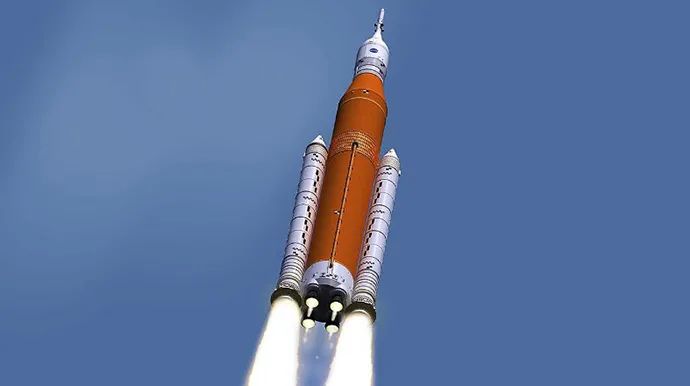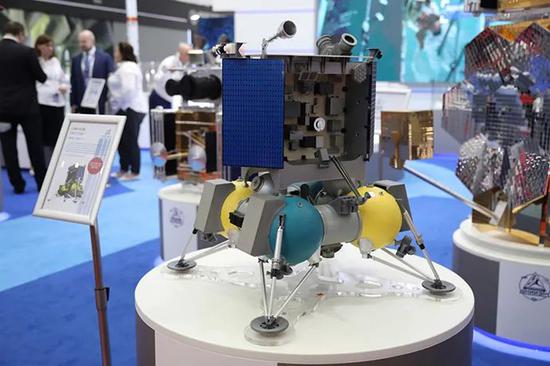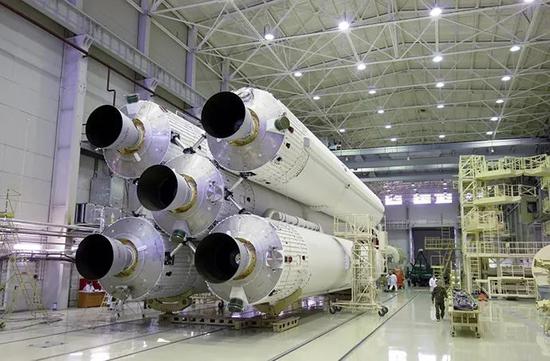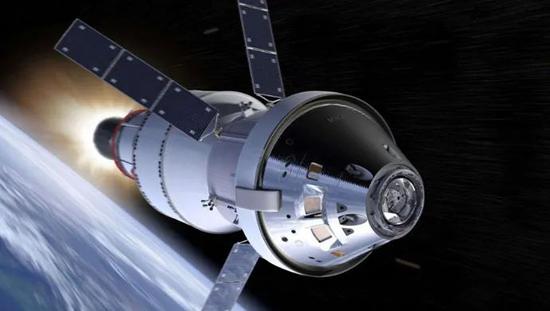December 17, the Chang’e-5 returner returned to Earth with lunar samples. The third step of the third phase of the lunar exploration project was successfully completed, which is not only of great significance, but also far-reaching.
The success of the Chang’e 5 lunar exploration mission also made China the third country in the world to successfully return to the moon by sampling. In the 21st century, a new wave of lunar exploration has emerged in the world.
The United States, Russia, Japan, India, ESA and many other countries or organizations have launched probes to the moon. Then, after Chang’e-5, which countries will go to the moon to “dig earth”?
The Unpredictable “Artemis”
Whether it is a manned moon landing to sample and return to the moon or an unmanned sample return, it can deepen human understanding of the moon.
Todd Harrison, director of the National Defense Budget Analysis Project and Space Security Project of the Center for Strategic and International Studies, said: “Collecting samples from more different places on the moon will help scientists better understand the resources on the moon and extract these resources in the future. May bring some economic value.”
During Trump’s tenure, he has been actively pushing the United States to achieve a manned moon landing in 2024, but the failure of the election may make the manned moon landing project “out of favor” due to regime change.
NASA’s November article stated that the Trump administration’s main civilian space goal is to land on the moon again, while the Biden team has made the study of Earth’s climate change its top priority.
Biden announced on the 10th the NASA transition team members and their future plans , To re-prioritize the Obama administration’s climate change research. Nevertheless, after taking office, Biden is likely to still encourage private space companies to participate in the aerospace industry.
After Biden takes office, the leadership of NASA may also change. The current Commissioner Jim Bridenstine was nominated by Trump and was appointed by the Senate in 2018.
On November 8, Bridenstine said in an interview with the media that he did not intend to remain in office after the “Biden Administration” came to power, because NASA would be responsible for people “close” to the White House.
At the end of 2017, US President Trump signed the “Space Policy Directive No. 1” (SPD-1), announcing that American astronauts will return to the moon and eventually go to Mars.
In March 2019, Vice President Pence announced that he would return to the moon in 2024 and named the “Artemis” plan. Artemis is the goddess of the moon in Greek mythology and the twin sister of the sun god Apollo.
The “Artemis” project is another massive lunar exploration project by the United States after the successful “Apollo” landing on the moon, which will have a major impact on the world’s space pattern.
According to NASA’s “Flying to the Moon: NASA’s Lunar Exploration Strategic Plan” released in May 2019, the “Artemis” plan for the United States to return to the moon in 2024 will be implemented in two phases.
The first phase emphasizes speed, that is, 2024. After landing on the moon; the second phase will realize long-term sustainable human exploration on the moon and its surroundings in 2028.
“The SLS heavy launch vehicle and the Orion spacecraft are important systems for the American manned moon landing.
These two systems are the products of the “constellation” program proposed by the Bush administration,” aerospace expert Pang Zhihao told The Paper, “SLS maximum carrying capacity Over 130 tons, the’Orion’ spacecraft is a manned spacecraft capable of deep space exploration, which can support manned lunar exploration and manned fire detection.”
“In addition to the SLS heavy-duty launch vehicle and the Orion spacecraft, the Artemis project also includes a new commercial manned landing system and a portal space station.” Pang Zhihao said.
In the first phase of the mission in 2024, two astronauts will land on the moon, including a female astronaut and a male astronaut.
The landing site is tentatively scheduled to be on the south pole of the moon. If the “Artemis” plan is successfully implemented, the astronauts will return to Earth again with lunar samples. From the first successful manned moon landing in 1969 to 1972, the United States successfully carried out 6 manned moon landing missions, bringing back a total of 381.6 kilograms of lunar samples.
On December 7, local time, a long report on its new moon landing program “Artemis” was released. The report mentioned that the mission also plans to collect a total of 85 kilograms of lunar soil samples from the surface and under the surface of the moon.
The “Artemis” plan may not only be affected by regime changes, but the epidemic and its own technological status will also affect the smooth implementation of the plan-the first flight of the SLS rocket has been repeatedly pushed.
In May of this year, NASA stated that the first launch of the agency’s SLS rocket will be postponed to the second half of 2021. The new crown virus pandemic is part of the reason for its delayed launch.
NASA originally planned to launch the powerful SLS rocket for the first time at the Kennedy Space Center in Florida in 2020, and allow the Orion spacecraft to orbit the moon for the first time. This mission is called “Artemis 1”, which proves NASA has the ability to send a manned spacecraft into lunar orbit before sending astronauts to the lunar surface. The SLS rocket was originally scheduled to fly in 2018, but it was postponed to 2020 due to technical reasons. The sudden outbreak of the epidemic caused the rocket’s first flight to be postponed to 2021.

Russia wants to restore the glory of lunar exploration
On December 1, China’s Chang’e-5 probe successfully landed on the moon. Savelyev, the head of the Russian National Aerospace Corporation in charge of international cooperation affairs, congratulated on this and wished China successfully complete the lunar sample return mission. He believes that the landing of the Chinese probe on the moon is of historical significance.
In 1976, the Soviet Union launched the last lunar surface sample and returned to the unmanned probe Luna-24. During the Cold War, the size of the Soviet Union’s lunar exploration was second only to that of the United States.
The Soviet Union carried out 64 lunar exploration missions and created many world firsts in lunar exploration. At the same time, it also implemented manned lunar landing projects (note: unsuccessful) . Now Russia hopes to continue its lunar exploration and restore its former glory.
According to a report by NASA in May this year, Russia plans to send three probes to the moon by 2025.
Vladimir Kolmekov, president of the Lavochkin Scientific and Production Consortium, a well-known aerospace company under the Russian Federal Space Agency (Roscosmos), said that the new spacecraft are named Luna-25, “Lunar”-26 (Luna-26) and “Lunar”-27 (Luna-27).

According to news published on Roscosmos’s official website, the “Lunar-25” probe should be completed in March next year, and the agency hopes to launch on October 1 next year.
According to previous reports by Russian media, the “Moon”-25 probe will look for water traces in the lunar south pole and test soft landing technology. It is reported that ESA will provide video cameras and ground support teams for this mission.
“Lunar”-26 is a lunar exploration mission (also known as “Moon-Waterdrop”), which will fly in an orbit around the moon at an altitude of 100 kilometers and draw a high-precision map of the moon for subsequent Russian lunar landings Detect and select landing areas, and will also undertake communications relay tasks.
The Lunar-27 probe (also known as “Moon-Resources”) is followed closely by the Lunar-27 probe, which will still land on the south pole of the moon and carry a Russian lunar rover as a lander- Joint scientific investigation of the inspector.
The “Moon”-27 project was once a Russian-Indian joint lunar exploration project, but then the two countries parted ways and became an independent Russian project. India subsequently developed the “Yue Chuan II” lander, but failed to land on the moon.
Kolmekov said: “We are very confident that Lunar-26 and Lunar-27 can be successfully launched in 2024 and 2025, respectively.”

In addition to the above three detectors, Russia also plans to carry out unmanned sampling and return detection missions. It plans to launch the “Moon”-28 probe in 2027. The probe will carry a small lunar rover and send lunar samples back to Earth; and Later launch of “Lunar”-29 will carry a larger lunar rover.
In the 21st century, after the United States proposed a manned mission to the moon, Russia also initiated research on manned moon landings, and plans to develop super-heavy launch vehicles, a new generation of spacecraft and landers to realize manned moon landings and establish a lunar base.
At present, Russia has suspended the development of a hugely expensive super-heavy launch vehicle, and the focus of rocket development has shifted to the “Angara”-A5V with a carrying capacity of about 35 tons.
The specific process is that four rockets “Angara”-A5V launch a manned spacecraft, a hydrogen-oxygen upper stage, a lunar landing ascender, and a hydrogen-oxygen upper stage.
The manned spacecraft and the lunar lander ascender are in the earth orbit and the hydrogen and oxygen The upper stage is docked and sent into the lunar orbit, and then the spacecraft and the lunar module are docked in the lunar orbit, and the lunar module performs the final step of manned moon landing.
In 2014, the “Angara”-A5 rocket launched successfully for the first time. The launch weight of the “Angara”-A5 rocket can reach 773 tons, and the payload can reach 24 tons. Its carrying capacity is equivalent to that of the “Proton” rocket. The improved “Angara”-A5 has a maximum carrying capacity of about 35 tons.
“For Russia, the biggest constraint on returning to the moon is funding. This has led to the launch of several probes. For example, the launch date of the Lunar-25 was originally planned for 2012, and it was delayed several times later. The launch date is 2021.” Pang Zhihao said.



